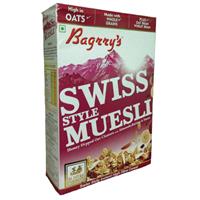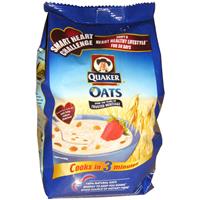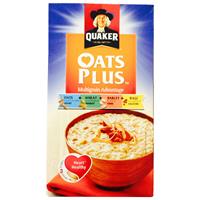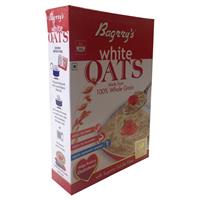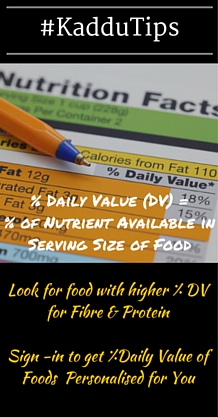
Bagrry's Swiss Style Muesli
Products in ‘Cereals & Muesli’ category range from 2.5 - 5

Current Product

- Compliments of Vitamins & MineralsThe micronutrients (Vitamins/Minerals) play an important role by ensuring proper functioning of cells and tissues.Each vitamin and trace mineral play a specific role in the body. For example, Vitamin C acts as antioxidant protecting cells from environmental damage, healing wounds and maintaining connective tissue whereas minerals like sodium, potassium and chloride function as electrolytes that assist in communication between cells necessary for nerve impulses and muscle contraction.Some products mimic the nature by adding artificial vitamins or minerals which have an identical form and function to those found in nature, but they are manufactured synthetically to meet extremely high standards of processed products.
- Good Source of FibreMore than 10% of the recommended intake of Dietary Fibre - Wow That's Good!Fibre plays an important role in managing your body regularities - Bowel movement - Keeping constipation at bay, a control on Blood Sugar spike and check on blood cholesterol.However, follow the principle of balance and don't go overboard by eating only fibre rich food.
- High in Good FatGood Fat ! Yes that's correct, Fat is not all bad. The Unsaturated Fat is also referred to as the Healthier Fat as it is source of essential fats (Omega 3 & Omega 6). Fats and oils that we generally consume are rich in omega 6 so try an incorporate the essential omega 3 containing foods in your daily diet. To identify the healthy fat in a food product, look for the Monounsaturated Fat (MUFA) and Polyunsaturated Fat (PUFA) on the nutrition label of the food. The higher the share these types have in the Total Fat or Lipid the better is the product. This does not mean that you should have more of a product just because it is high in Unsaturated Fats. While selecting a food product prefer the one with energy from Fat not be more 30% of total energy available in the product and there is more of the unsaturated fats.
- Know your Food- Sugar and its AliasesSome Food Products mask the amount of Added Sugar by using multiple forms of sugar and avoid displaying Sugar as one of the first ingredient. All Ingredient list are in descending order by their weight, so the position of sugar and its aliases can give an indication of the amount of 'Added Sugar'.Though the Nutrition Fact label on the food product gives you the Total Sugar, the regulation does not require the break up between natural and added sugar to be given. Thus, it is important to know the different sources of sugar that may be present in a food product to get an idea of added sugar.At the same time it is important to understand that the body does not distinguish between natural and added sugar, so take note of the Total Sugar in the Nutritional Fact label.Read more about the many different sources of sugar which includes Dextrose, Invert Syrup, Maltodextrin, Honey...
- Highly Processed!Additives are added to the packaged foods for different reasons varying from increasing shelf life, to provide flavour and texture, increasing nutrition quality or required to manufacture some types of food.One of the ways to determine the degree of Processing is the number of additives you find in the ingredient list. The higher the number of additives greater is the degree of processing. Additives can be identified by looking for ingredients that begin with 'E' and have a number in them.It is generally recommended that food that is closer to nature is better hence it is better to choose food products with lesser number of additives.
Disclaimer:Product Analysis is based on general practices in the field of Nutrition. Please check with or consult a qualified and licensed medical professional for its suitability to you.

